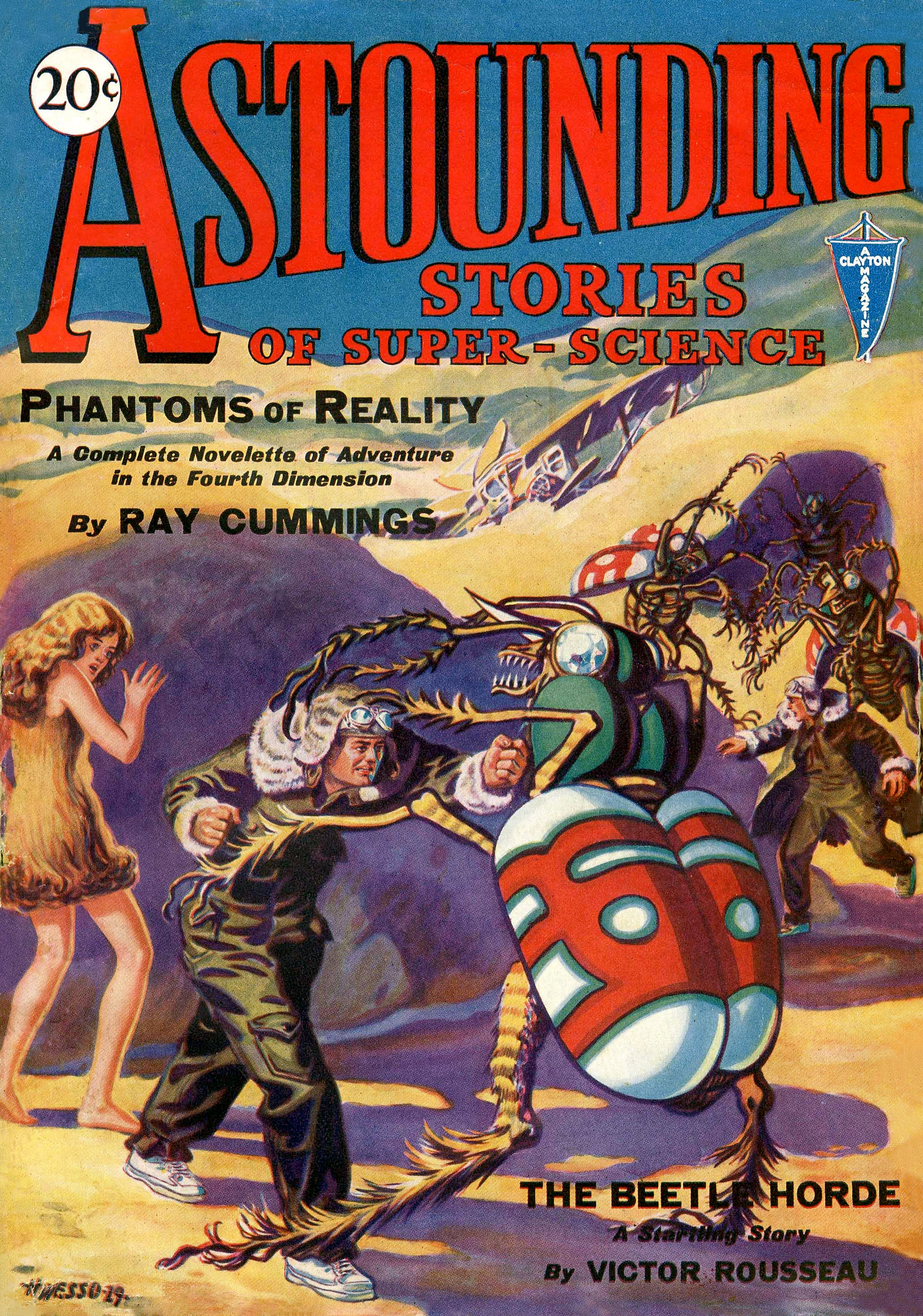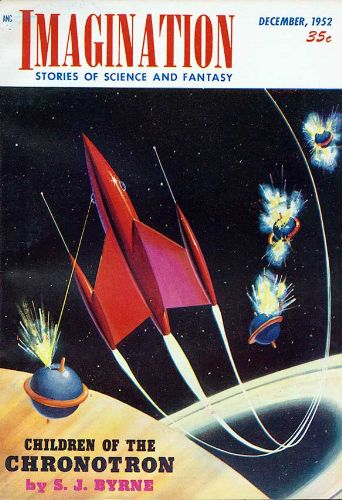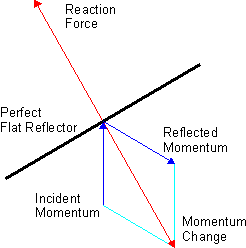|
Starwisp
Starwisp is a hypothetical unmanned interstellar probe design proposed by the late Robert L. Forward. It is propelled by a microwave sail, similar to a solar sail in concept, but powered by microwaves from a human-made source. It would fly through the target system without slowing down. Description "Starwisp" is a concept for an ultra-low-mass interstellar probe pushed by a microwave beam. It was proposed by scientist and author Robert L. Forward in 1985, and further work was published by Geoffrey A. Landis in 2000.Landis, Geoffrey A. "Microwave Pushed Interstellar Sail: Starwisp Revisited" (paper AIAA-2000-3337, presented at the AIAA 36th Joint Propulsion Conference and Exhibit, Huntsville AL, July 17–19, 2000). The proposed device uses beam-powered propulsion in the form of a high-power microwave antenna pushing a sail. The probe itself would consist of a mesh of extremely fine carbon wires about 100 m across, with the wires spaced the same distance apart as the 3&nbs ... [...More Info...] [...Related Items...] OR: [Wikipedia] [Google] [Baidu] |
Interstellar Probe
An interstellar probe is a space probe that has left—or is expected to leave—the Solar System and enter interstellar medium, interstellar space, which is typically defined as the region beyond the Heliopause (astronomy), heliopause. It also refers to probes capable of reaching other star systems. there are five interstellar probes, all launched by the American space agency NASA: ''Voyager 1'', ''Voyager 2'', ''Pioneer 10'', ''Pioneer 11'' and ''New Horizons''. Also ''Voyager 1'' and ''Voyager 2'' are the only probes to have actually reached interstellar space. The other three are on interstellar trajectories. Contact to Pioneer 10 and 11 was lost long before they reached interstellar space. The termination shock is the point in the heliosphere where the solar wind slows down to subsonic speed. Even though the termination shock happens as close as 80–100 AU (astronomical units) the maximum extent of the region in which the Sun's gravitational field is dominant (the Hill sp ... [...More Info...] [...Related Items...] OR: [Wikipedia] [Google] [Baidu] |
Beam-powered Propulsion
Beam-powered propulsion, also known as directed energy propulsion, is a class of aircraft or spacecraft propulsion that uses energy beamed to the spacecraft from a remote power plant to provide energy. The beam is typically either a microwave or a laser beam, and it is either pulsed or continuous. A continuous beam lends itself to thermal rockets, photonic thrusters, and light sails. In contrast, a pulsed beam lends itself to ablative thrusters and pulse detonation engines. The rule of thumb that is usually quoted is that it takes a MegaWatt, megawatt of power beamed to a vehicle per kg of payload while it is being accelerated to permit it to reach low Earth orbit. More speculative designs, using mass ("micro-pellet") beams, would allow for reaching the edge of the solar gravity lens, or even nearby stars, in decades. Other than launching to orbit, applications for moving around the world quickly have also been proposed. Background Rockets are momentum machines; they use mass ej ... [...More Info...] [...Related Items...] OR: [Wikipedia] [Google] [Baidu] |
Solar Sail
Solar sails (also known as lightsails, light sails, and photon sails) are a method of spacecraft propulsion using radiation pressure exerted by sunlight on large surfaces. A number of spaceflight missions to test solar propulsion and navigation have been proposed since the 1980s. The two spacecraft to successfully use the technology for propulsion were IKAROS, launched in 2010, and LightSail-2, launched in 2019. A useful analogy to solar sailing may be a sailing boat; the light exerting a force on the large surface is akin to a sail being blown by the wind. High-energy laser beams could be used as an alternative light source to exert much greater force than would be possible using sunlight, a concept known as beam sailing. Solar sail craft offer the possibility of low-cost operations combined with high speeds (relative to chemical rockets) and long operating lifetimes. Since they have few moving parts and use no propellant, they can potentially be used numerous times for ... [...More Info...] [...Related Items...] OR: [Wikipedia] [Google] [Baidu] |
Interstellar Travel
Interstellar travel is the hypothetical travel of spacecraft between star systems. Due to the vast distances between the Solar System and nearby stars, interstellar travel is not practicable with current propulsion technologies. To travel between stars within a reasonable amount of time (decades or centuries), an interstellar spacecraft must reach a significant fraction of the speed of light, requiring enormous energy. Communication with such interstellar craft will experience years of delay due to the speed of light. Collisions with cosmic dust and gas at such speeds can be catastrophic for such spacecrafts. Crewed interstellar travel could possibly be conducted more slowly (far beyond the scale of a human lifetime) by making a generation ship. Hypothetical interstellar propulsion systems include nuclear pulse propulsion, fission-fragment rocket, fusion rocket, beamed solar sail, and antimatter rocket. The benefits of interstellar travel include detailed surveys of habitable exop ... [...More Info...] [...Related Items...] OR: [Wikipedia] [Google] [Baidu] |
Breakthrough Starshot
Breakthrough Starshot is a research and engineering project by the Breakthrough Initiatives to develop a proof-of-concept fleet of light sail interstellar probes named ''Starchip'', to be capable of making the journey to the Alpha Centauri star system 4.34 light-years away. It was founded in 2016 by Yuri Milner, Stephen Hawking, and Mark Zuckerberg. A flyby mission has been proposed to Proxima Centauri b, an Earth-sized exoplanet in the habitable zone of its host star, Proxima Centauri, in the Alpha Centauri system. At a speed between 15% and 20% of the speed of light, it would take between 20 and 30 years to complete the journey, and approximately 4 years for a return message from the starship to Earth. The conceptual principles to enable this interstellar travel project were described in "A Roadmap to Interstellar Flight", by Philip Lubin of UC Santa Barbara.(file available at University of California, Santa Barbarhere Accessed 16 April 2016) Sending the lightweight sp ... [...More Info...] [...Related Items...] OR: [Wikipedia] [Google] [Baidu] |
Geoffrey A
Geoffrey, Geoffroy, Geoff, etc., may refer to: People * Geoffrey (given name), including a list of people with the name Geoffrey or Geoffroy * Geoffroy (surname), including a list of people with the name * Geoffroy (musician) (born 1987), Canadian singer and songwriter Fictional characters * Geoffrey the Giraffe, the Toys "R" Us mascot * Geoff Peterson, an animatronic robot sidekick on ''The Late Late Show with Craig Ferguson'' * Geoff, a character from the cartoon series ''Total Drama'' * Geoff, Mark Corrigon's romantic rival on ''Peep Show (British TV series), Peep Show'' Other uses * Geoff (Greyhawk), a fictional land in the World of Greyhawk ''Dungeons & Dragons'' campaign setting See also * Galfrid * Geof * Gofraid/Goraidh * Godfrey (name) * Gottfried * Godefroy (other) * Goffredo * Jeffery (name) * Jeffrey (name) * Jeffries * Jeffreys * Jeffers * Jeoffry (cat) * Jeff {{disambiguation ... [...More Info...] [...Related Items...] OR: [Wikipedia] [Google] [Baidu] |
Ultraviolet
Ultraviolet radiation, also known as simply UV, is electromagnetic radiation of wavelengths of 10–400 nanometers, shorter than that of visible light, but longer than X-rays. UV radiation is present in sunlight and constitutes about 10% of the total electromagnetic radiation output from the Sun. It is also produced by electric arcs, Cherenkov radiation, and specialized lights, such as mercury-vapor lamps, tanning lamps, and black lights. The photons of ultraviolet have greater energy than those of visible light, from about 3.1 to 12 electron volts, around the minimum energy required to ionize atoms. Although long-wavelength ultraviolet is not considered an ionizing radiation because its photons lack sufficient energy, it can induce chemical reactions and cause many substances to glow or fluoresce. Many practical applications, including chemical and biological effects, are derived from the way that UV radiation can interact with organic molecules. The ... [...More Info...] [...Related Items...] OR: [Wikipedia] [Google] [Baidu] |
Hypothetical Spacecraft
A hypothesis (: hypotheses) is a proposed explanation for a phenomenon. A scientific hypothesis must be based on observations and make a testable and reproducible prediction about reality, in a process beginning with an educated guess or thought. If a hypothesis is repeatedly independently demonstrated by experiment to be true, it becomes a scientific theory. In colloquial usage, the words "hypothesis" and "theory" are often used interchangeably, but this is incorrect in the context of science. A working hypothesis is a provisionally-accepted hypothesis used for the purpose of pursuing further progress in research. Working hypotheses are frequently discarded, and often proposed with knowledge (and warning) that they are incomplete and thus false, with the intent of moving research in at least somewhat the right direction, especially when scientists are stuck on an issue and brainstorming ideas. A different meaning of the term ''hypothesis'' is used in formal logic, to deno ... [...More Info...] [...Related Items...] OR: [Wikipedia] [Google] [Baidu] |
Analog Science Fiction And Fact
''Analog Science Fiction and Fact'' is an American science fiction magazine published under various titles since 1930. Originally titled ''Astounding Stories of Super-Science'', the first issue was dated January 1930, published by William Clayton (publisher), William Clayton, and edited by Harry Bates (author), Harry Bates. Clayton went bankrupt in 1933 and the magazine was sold to Street & Smith. The new editor was F. Orlin Tremaine, who soon made ''Astounding'' the leading magazine in the nascent pulp science fiction field, publishing well-regarded stories such as Jack Williamson's ''Legion of Space Series, Legion of Space'' and John W. Campbell's Twilight (Campbell short story), "Twilight". At the end of 1937, Campbell took over editorial duties under Tremaine's supervision, and the following year Tremaine was let go, giving Campbell more independence. Over the next few years Campbell published many stories that became classics in the field, including Isaac Asimov's Found ... [...More Info...] [...Related Items...] OR: [Wikipedia] [Google] [Baidu] |
Science Fiction
Science fiction (often shortened to sci-fi or abbreviated SF) is a genre of speculative fiction that deals with imaginative and futuristic concepts. These concepts may include information technology and robotics, biological manipulations, space exploration, time travel, Parallel universes in fiction, parallel universes, and extraterrestrials in fiction, extraterrestrial life. The genre often explores human responses to the consequences of projected or imagined scientific advances. Science fiction is related to fantasy (together abbreviated wikt:SF&F, SF&F), Horror fiction, horror, and superhero fiction, and it contains many #Subgenres, subgenres. The genre's precise Definitions of science fiction, definition has long been disputed among authors, critics, scholars, and readers. Major subgenres include hard science fiction, ''hard'' science fiction, which emphasizes scientific accuracy, and soft science fiction, ''soft'' science fiction, which focuses on social sciences. Other no ... [...More Info...] [...Related Items...] OR: [Wikipedia] [Google] [Baidu] |
Radiation Pressure
Radiation pressure (also known as light pressure) is mechanical pressure exerted upon a surface due to the exchange of momentum between the object and the electromagnetic field. This includes the momentum of light or electromagnetic radiation of any wavelength that is Absorption (electromagnetic radiation), absorbed, Reflection (physics), reflected, or otherwise emitted (e.g. black-body radiation) by matter on any scale (from macroscopic objects to dust particles to gas molecules). The associated force is called the radiation pressure force, or sometimes just the force of light. The forces generated by radiation pressure are generally too small to be noticed under everyday circumstances; however, they are important in some physical processes and technologies. This particularly includes objects in outer space, where it is usually the main force acting on objects besides gravity, and where the net effect of a tiny force may have a large cumulative effect over long periods of time. ... [...More Info...] [...Related Items...] OR: [Wikipedia] [Google] [Baidu] |
Dusty Plasma
A dusty plasma is a Plasma (physics), plasma containing micrometer (10−6) to nanometer (10−9) sized particles suspended in it. Dust particles are charged and the plasma and particles behave as a plasma. Dust particles may form larger particles resulting in "grain plasmas". Due to the additional complexity of studying plasmas with charged dust particles, dusty plasmas are also known as complex plasmas. Dusty plasmas are encountered in: * Astrophysical plasma, Space plasmas * The mesosphere of the Earth * Specifically designed laboratory experiments Dusty plasmas are interesting because the presence of particles significantly alters the charged particle equilibrium leading to different phenomena. It is a field of current research. Electrostatic coupling between the grains can vary over a wide range so that the states of the dusty plasma can change from weakly coupled (gaseous) to crystalline, forming so-called plasma crystals. Such plasmas are of interest as a non-Hamiltonian sy ... [...More Info...] [...Related Items...] OR: [Wikipedia] [Google] [Baidu] |






